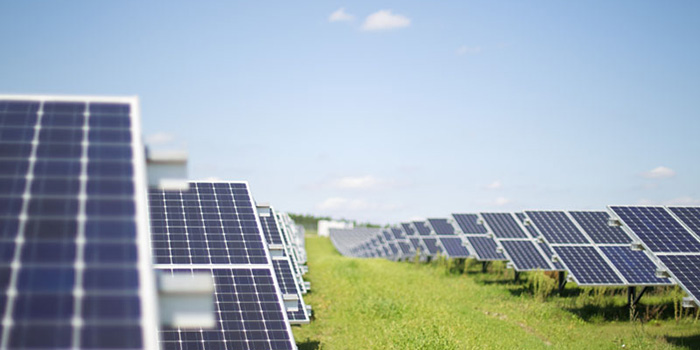 In 2012 I wrote two opinion articles on solar projects and farmland. Following those articles I was asked to testify in a number of cases where residents were trying to fight the siting of solar projects on farmlands. In some cases we were successful, but in others we lost. As a lifelong environmentalist and a licensed professional planner, I found that it was difficult to deal with the conflict between the need for clean energy and the need to preserve farmlands and woodlands. Nevertheless, I decided that given the many other suitable locations for solar projects — such as rooftops, parking lots, landfills, and unused land — it made sense to fight for the resources that couldn’t easily be replaced. Since that time there has been a significant reduction in the demand to utilize farmland and woodlands for solar projects. However, a recent bill, S-2605 is reenergizing the debate.
In 2012 I wrote two opinion articles on solar projects and farmland. Following those articles I was asked to testify in a number of cases where residents were trying to fight the siting of solar projects on farmlands. In some cases we were successful, but in others we lost. As a lifelong environmentalist and a licensed professional planner, I found that it was difficult to deal with the conflict between the need for clean energy and the need to preserve farmlands and woodlands. Nevertheless, I decided that given the many other suitable locations for solar projects — such as rooftops, parking lots, landfills, and unused land — it made sense to fight for the resources that couldn’t easily be replaced. Since that time there has been a significant reduction in the demand to utilize farmland and woodlands for solar projects. However, a recent bill, S-2605 is reenergizing the debate.
In 2012 I wrote, “Real farming — the production of food — is what the Garden State has been about for hundreds of years …. When they think of New Jersey, most Americans think of the Turnpike, industrial parks, suburban and urban housing or the Shore. It is difficult for them to imagine that we have thousands of acres dedicated to farming …. Protecting the environment is not just about clean water and clean air; it is also about protecting our ability to live on the Earth.”
According to the New Jersey Department of Agriculture, “To date, New Jersey’s Farmland Preservation Program has resulted in the permanent protection of over 2,600 farms, accounting for more than 237,000 acres — or roughly one-third of all farmland in the state.” This effort has been recognized as the top-ranked in the nation, according to the American Farmland Trust. Under S-2605 these lands would be exempt from utility-scale solar projects. However, this still leaves 513,000 acres that could be utilized for solar projects.
Solar won’t ‘preserve’ farmland
It has been argued that the unprotected lands could be potentially available for residential and commercial development, and that solar projects would “preserve these farms for the future.” However, this is somewhat disingenuous. Once the land has been converted to a solar project, there will be little or no incentive to turn it back to agriculture in the future. Instead, it will likely be used for some other nonfarm purpose since its link to farming will long be forgotten.
An argument can be made that some of the existing farmland is marginal in terms of soil quality and/or economics. These farmers will probably never preserve their farms and will likely sell the land in the future. Under that scenario, placing solar panels on the land may make sense. However, it begs the question, “Is this the best place for solar?” We need to first identify those farms that are marginal and determine whether it makes sense for farmers to turn their land over to solar.
S-2605 also allows for solar projects to be built on woodlands except for Green Acres areas, the Pinelands and the Highlands (where designated). This provision is especially problematic. Whereas the goal of solar power is to reduce pollution from fossil fuels and therefore help ameliorate the impacts of climate change, it does not make sense to destroy one critical climate-change agent for another. Trees are important tools in the fight to stave off global warming. According to Tom Gilbert of the New Jersey Conservation Foundation, “Forests sequester and store about 8% of New Jersey’s greenhouse gas emissions.” Trees are a critical component of our ecosystem and provide irreplaceable benefits, including the provision of oxygen, critical habitats, intercepting airborne pollutants and reducing smog. Under no circumstances should solar projects be placed in existing forests.
The right surface for solar
I have contended over the years that the best place for solar panels is over existing impervious surfaces, particularly the thousands of acres that we have devoted to surface and garage parking. Panels can easily be placed as canopies and also provide the benefit of shade for the cars underneath. There is also ready infrastructure for connection to the grid and easy access. Rooftops of large buildings also can and should be used. The key is to multipurpose the impervious surfaces. It is hoped that as solar continues to evolve it will take less land to provide the same or greater energy output.
There is no question that we need to continue on the path to clean energy, and that solar is one of the critical means to accomplish our goals. However, we also need to preserve our open space and agricultural viability. Let’s first utilize the impervious spaces that we already have, rather than cover our land with new impervious cover.
